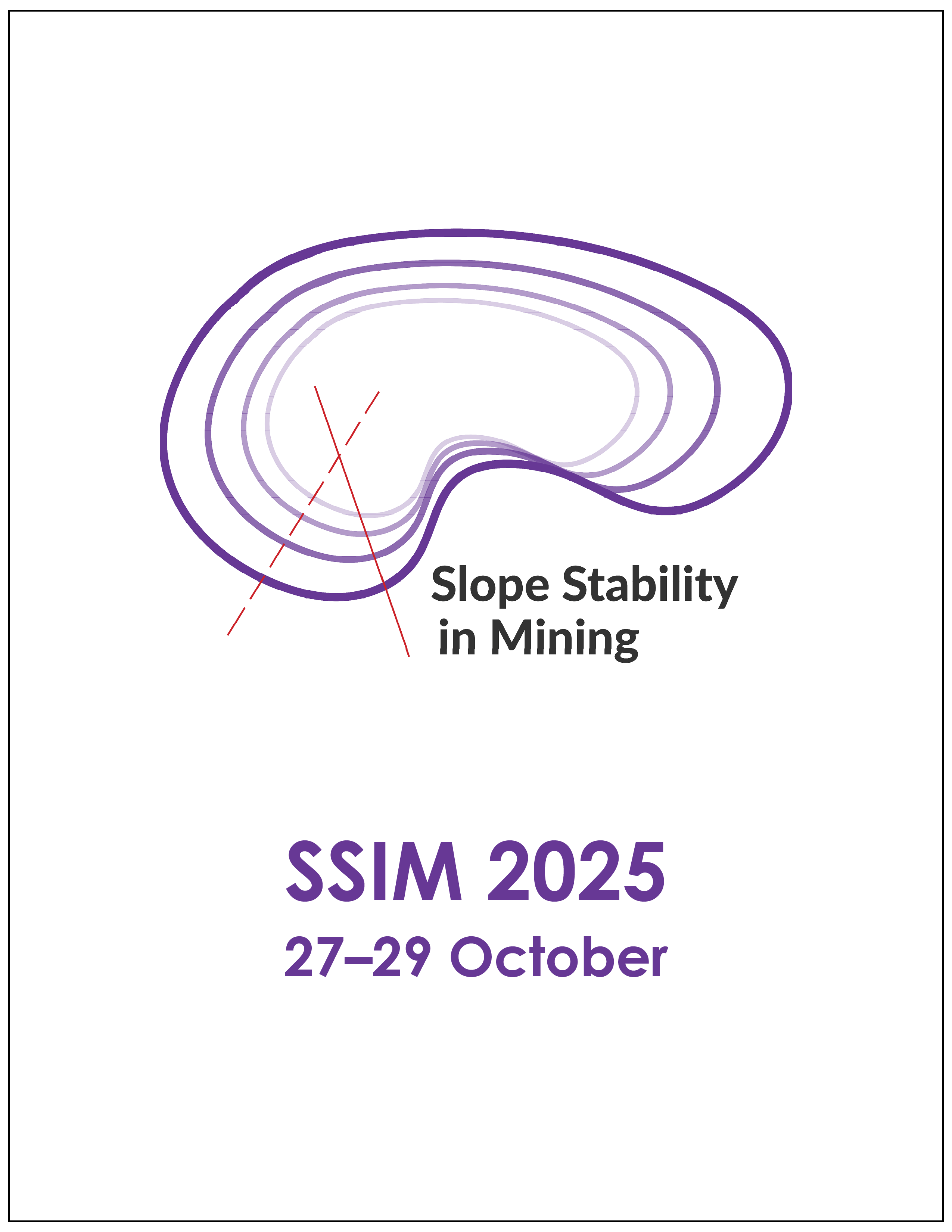A semi-quantitative approach to pit slope design acceptance

|
Authors: Sharp, M; Yost, R |
DOI https://doi.org/10.36487/ACG_repo/2535_01
Cite As:
Sharp, M & Yost, R 2025, 'A semi-quantitative approach to pit slope design acceptance', in JJ Potter & J Wesseloo (eds), SSIM 2025: Fourth International Slope Stability in Mining Conference, Australian Centre for Geomechanics, Perth, https://doi.org/10.36487/ACG_repo/2535_01
Abstract:
Current geotechnical practice for pit slope design typically involves a binary approach to design acceptance by defining a minimum Factor of Safety based on consequence of failure – the slope equals or exceeds the acceptance criteria, or it doesn’t. While this approach could be appropriate for simplified geometries and lower pit slope heights, it may not capture the innate uncertainty and complexity that exists with increasingly sophisticated pit slope stability modelling analysis and large, complex, pit slopes. The acceptance of a design should not solely be based on the result of a stability model, but rather, the stability model should be used as one indication. This paper presents a semi-quantitative approach for inter-ramp to global-scale pit slope design, by incorporating a range of slope stability indicators – such as stability and deformation modelling results, empirical performance, failure predictability, and level of uncertainty – and combining these indicators into one stability rating. Design acceptance criteria are defined by a stability target based on consequence of failure, and the ability to predict and manage slope instability. This allows for a strategic and comprehensive risk-based approach to pit slope design that aims to explicitly identify areas of uncertainty and risk.
Keywords: design acceptance, stability indicators, performance-based design, risk management
References:
Brox, D & Newcomen, W 2003, ‘Utilizing strain criteria to predict highwall stability performance’, South African Institute for Mining and Metallurgy, Johannesburg.
Erharter G & Elmo D 2025, ‘Is complexity the answer to the continuum vs. discontinuum question in rock engineering?’, Rock Mechanics and Rock Engineering.
Hoek, E 1991, ‘When is a design in rock engineering acceptable?’, in W Wittke (ed.), Proceedings of the 7th International Congress on Rock Mechanics, Balkema, Rotterdam, pp. 1485–1497.
Macciotta, R, Creighton, A, Martin, CD, ‘Design acceptance criteria for operating open-pit slopes: an update’, CIM Journal, vol. 11, no. 4,
Newcomen, W & Dick, G, 2016, ‘An update to the strain-based approach to pit wall failure prediction, and a justification for slope monitoring’, Journal of the Southern African Institute of Mining and Metallurgy, vol. 116, no. 5.
Read, J & Stacey, P 2009, Guidelines for Open Pit Slope Design, CRC Press/Balkema, Boca Raton.
Sharp, M, Yost, R & Nielsen, B 2024, ‘Evolution in pit slope design acceptance Criteria’, Proceedings of the Slope Stability 2024 Conference, Brazilian Geotechnical Society, Belo Horizonte.
Sharp, M & Yost, R 2025, ‘Probability of failure vs. probability of collapse’, Proceedings from 23rd Canadian Rock Mechanics Symposium, Canadian Rock Mechanics Association, Montreal.
Yost, R, Sharp, M & Jackson A 2025, ‘Incorporating sensitivity analysis results into estimated factor of safety / strength reduction factors’, Proceedings from 23rd Canadian Rock Mechanics Symposium, Canadian Rock Mechanics Association, Montreal.
Tims, S, Oosthuizen, J & Garcia, I 2024, ‘Reducing design uncertainty by better handover to mine planning’, Proceedings of the Slope Stability 2024 Conference, Brazilian Geotechnical Society, Belo Horizonte.
© Copyright 2025, Australian Centre for Geomechanics (ACG), The University of Western Australia. All rights reserved.
View copyright/legal information
Please direct any queries or error reports to repository-acg@uwa.edu.au
View copyright/legal information
Please direct any queries or error reports to repository-acg@uwa.edu.au

